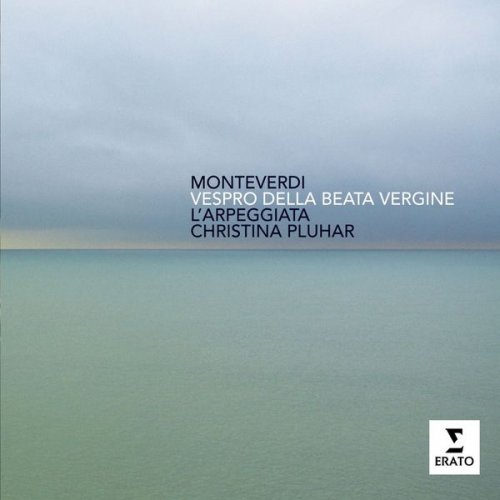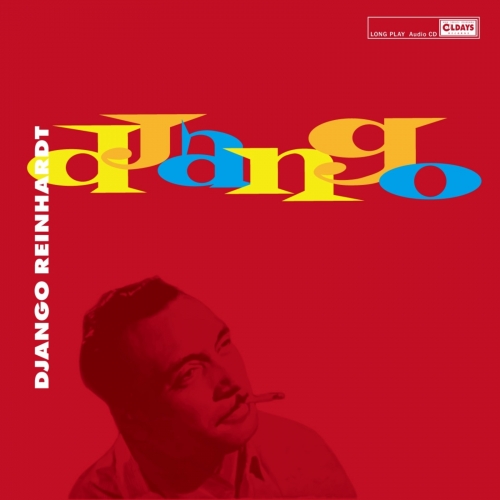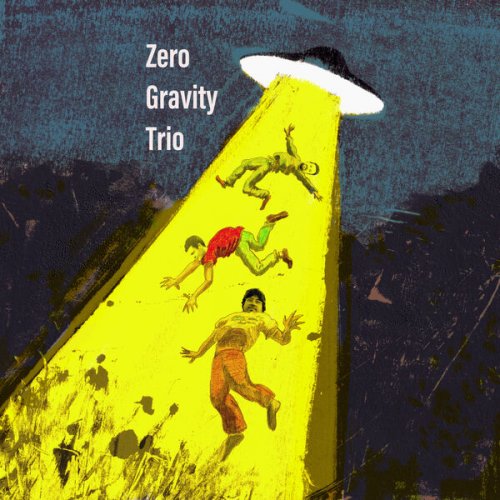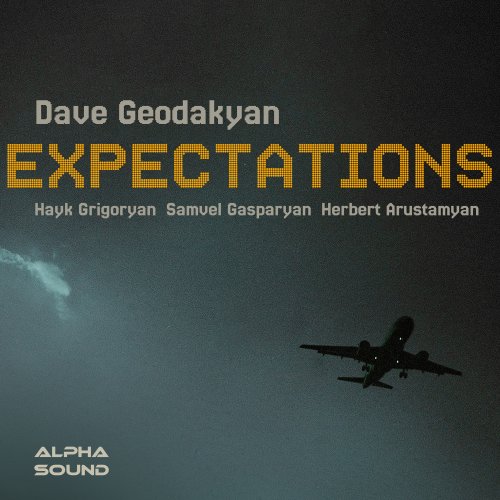L'Arpeggiata, Christina Pluhar - Monteverdi : Vespro della Beata Vergine (1610) (2011) [Hi-Res]

Artist: L'Arpeggiata, Christina Pluhar
Title: Monteverdi : Vespro della Beata Vergine
Year Of Release: 2011
Label: Warner Classics
Genre: Classical
Quality: flac lossless / flac 24bits - 44.1kHz +Booklet
Total Time: 01:15:10
Total Size: 347 / 687 mb
WebSite: Album Preview
TracklistTitle: Monteverdi : Vespro della Beata Vergine
Year Of Release: 2011
Label: Warner Classics
Genre: Classical
Quality: flac lossless / flac 24bits - 44.1kHz +Booklet
Total Time: 01:15:10
Total Size: 347 / 687 mb
WebSite: Album Preview
---------
01. 'Vespro della Beata Vergine' 1610: Introitus: Deus in adiutorium meum intende & Toccata: Domine ad adiuvandum me festina
02. 'Vespro della Beata Vergine' 1610: Dixit Dominus Domino meo
03. 'Vespro della Beata Vergine' 1610: Nigra sum
04. 'Vespro della Beata Vergine' 1610: Laudate pueri, Dominum
05. 'Vespro della Beata Vergine' 1610: Pulchra es
06. 'Vespro della Beata Vergine' 1610: Laetatus sum
07. 'Vespro della Beata Vergine' 1610: Duo Seraphim
08. 'Vespro della Beata Vergine' 1610: Nisi Dominus
09. 'Vespro della Beata Vergine' 1610: Audi coelum
10. 'Vespro della Beata Vergine' 1610: Lauda Jerusalem
11. 'Vespro della Beata Vergine' 1610: Sonata sopra Sancta Maria Ora pro nobis
12. 'Vespro della Beata Vergine' 1610: Ave maris stella
13. 'Vespro della Beata Vergine' 1610: Magnificat
14. 'Vespro della Beata Vergine' 1610: Et exultabit
15. 'Vespro della Beata Vergine' 1610: Quia respexit
16. 'Vespro della Beata Vergine' 1610: Quia fecit
17. 'Vespro della Beata Vergine' 1610: Et misericordia
18. 'Vespro della Beata Vergine' 1610: Fecit potentiam
19. 'Vespro della Beata Vergine' 1610: Deposuit
20. 'Vespro della Beata Vergine' 1610: Esurientes
21. 'Vespro della Beata Vergine' 1610: Suscepit
22. 'Vespro della Beata Vergine' 1610: Sicut locutum est
23. 'Vespro della Beata Vergine' 1610: Gloria
24. 'Vespro della Beata Vergine' 1610: Sicut erat
L’Arpeggiata, the multi-faceted ensemble led by Christina Pluhar, celebrates its 10th birthday by marking the 400th anniversary of Monteverdi’s Vespro della beata vergine, one of the supreme masterpieces of music history. As Pluhar explains: “All 30 singers and instrumentalists on our recording have had a long and emotional relationship with this work.”
2010 marked the 400th anniversary of one of the landmarks of musical history, Monteverdi’s Vespro della beata Vergine, better known simply as the Vespers. Exactly 50 times younger is the multi-faceted vocal and instrumental ensemble L’Arpeggiata, founded 10 years ago by Christina Pluhar. Pluhar’s achievement was recognised in 2009 with Germany’s prestigious Echo Klassik award for L’Arpeggiata’s first Virgin Classics release, Teatro d’Amore, which presented a diverse, improvisational programme of items by Monteverdi. Here, Pluhar and her musicians engage more formally with an extended work by the same composer.
“The Vespers is one of the supreme masterpieces of music history,” says Pluhar. “Monteverdi exploits all the skills and compositional techniques that existed at the time. All 30 singers and instrumentalists on our recording have had a long and emotional relationship with this work and were very excited by creating this recording with L'Arpeggiata. Over the last 25 years, the approach to performing the Vespers has changed considerably, and hopefully l'Arpeggiata's version will make its mark."
This Vespers is the fruit of L’Arpeggiata's collaboration with the Festival de Música Antiga de Barcelona, De Bijloke music centre in Ghent and L’Arsenal concert hall in Metz in eastern France, which, with its much-praised acoustic, was the venue for recording the work. L’Arpeggiata was in residence at L’Arsenal over the 2009-10 season.
“We have taken an intimate approach: the way the music is written suggests not a choir, but a single voice for each line,” explains Pluhar. “It is always very important for me to work with voices that I feel match the colours in the music, and I have made different choices for each section of the Vespers.” Notably, the often low-lying alto parts were shared between mezzo-sopranos, countertenors and high tenors. “The twelve singers on this recording all have wonderful voices and are astounding soloists who bring both tonal beauty and a strong theatrical presence. I gave them a lot of responsibility in the ensemble work, which I feel brings us closer to spirit of the original performances. Polyphony for six or ten solo voices does not need too much intervention from a conductor in a classical sense.”
Pluhar herself plays the theorbo in this recording, and L’Arpeggiata’s famed improvisational skills are brought to new heights in the spectacular ornamentation by the cornetti and violins. Again inspired by the music’s colours, Pluhar’s chosen instrumentation includes two organs for the sections with double choir, and features the psaltery; its timbre is closely linked with L’Arpeggiata’s soundworld and Pluhar feels it evokes archaic scenes at moments in the score.
“The texts are certainly diverse … there is the purity of the Magnificat or the erotic charge of Nigra sum from the Song of Songs, and then there is the more assertive spirit of the Dixit Dominus ... We cannot be sure whether Monteverdi conceived the Vespers as a single work or as a series of separate motets, but nevertheless there is a magic in the construction of this piece, which leaves me personally in no doubt that Monteverdi ingeniously conceived the work as a unity, both musically and theatrically.”
L’Arpeggiata’s success in capturing every aspect of the Vespers was recognised by the Metz newspaper Le Républicain Lorrain: “L’Arpeggiata intrepidly tackles this complex architecture with both monastic rigour and unprecedented flamboyance, with unrivalled instrumental and vocal virtuosity … [The] validity of the tempos is always in evidence, robust and explosive. Above all, the vocal declamation is genuine. Immediately striking is the special timbre of the male singers … whose voices shoot up … like the pillars of a cathedral … as they deploy their vocal substance, and, through their projection, suggest an operatic instrument which has accommodated to baroque style.
“… The melodiously rounded sound of the three sopranos and the mezzo, with their sensitive coloratura, naturally reflects the virginal spirit of the Vespers … As for the orchestra, the cornetts assert their presence to fabulous effect, and the natural trombones are brilliantly brassy, while the theorbos, archlute and harp provide limpid tracery. Passion, and then jubilation grow from the Lauda Jerusalem to the Ave Maris Stella, sung in a prayerful voice, to the sublime Magnificat, in which the voices and the wind instruments glow into flame. All in all, a conception that is both cloistered and profane.”








